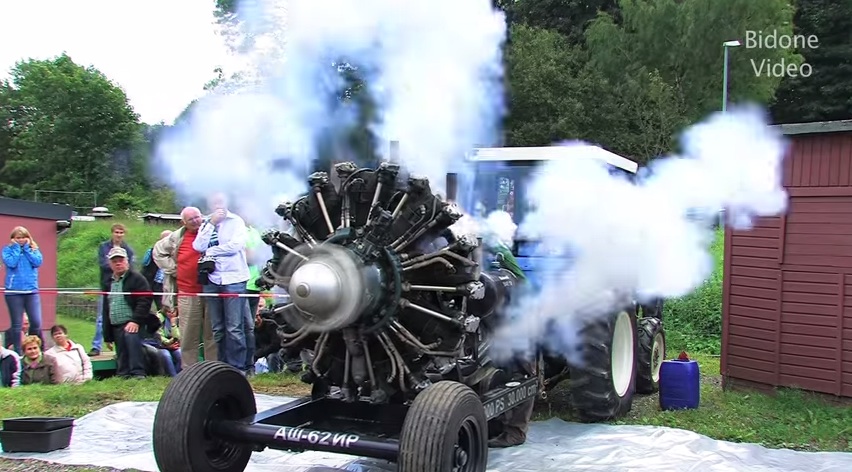No really! I was skimming YouTube yesterday and saw this one and figured Brian had to have seen it before, but since it had never been put up on the site I thought maybe not. So I sent him the link and asked if he had seen it before. His response was… “That just made my f’ing day! Wow! One thing I saw which stood out. See how the cap for the oil tank has a vent tube on it? That thing must actually consume the oil as it runs. Why else would it have a vented cap? Wild!”
Well, after I stopped laughing, I responded and commented on the vent in the oil fill “cap” as well. I’m no radial engine expert, and if there are any on here who watch this I would absolutely welcome your comments and either approval or disapproval on why the vent exists.
If you aren’t very familiar with radial engines, they were used in aircraft back in the day and have some strange parts in comparison to a normal V or inline engine. Yeah there is a crankshaft, rods, and pistons, but the way they work together is a little strange because the rods all ride on one common rod journal. Since Radial engines come in a variety of cylinder counts, it might be possible that some of the larger ones have two rod journals, I’m just not sure. They have cylinder heads much like a motorcycle, but because the cylinders run radially around the crank, some of them are upside down. These upside-down or sideways cylinders tend to burn oil because it leaks past the rings, especially when they are not running which means they have a lot of oil that burns at startup.
Our guess is that the oil tank seen in this video is not part of the crankcase, but rather a reservoir like a dry sump tank if you will, and therefore needs to be vented so that the pump can draw oil from the tank.
Regardless of the weirdness and why’s, this sucker is bad ass when it fires. Hell, it cackles like a nitro engine. We dig it. You will too.



























It’s a baby compared to a Zvezda diesel built for Soviet era missile boats. 110 cylinders ( 7×16) and 10,000 HP. Still cool to see and hear one start. 🙂
All radial engines use a dry-sump setup, usually with the oil tank mounted on the firewall behind the engine.Typical capacity even for a smaller radial, (e.g., 985 cu in) will be 7 gal or more.
More videos like this: https://www.youtube.com/user/Bidone1967/videos
Boris started his patent vodka atomiser and the crowd went wild!
Notice the guy pulling the engine through several revolutions after having removed the spark plugs from the bottom cylinders. This is done to protect against hydraulic lock when the engine is fired after sitting, as the oil remaining in the crankcase when the engine is shut down will slowly leak into the bottom cylinders. If this is not done, then it is likely that a cylinder head will be blown off when the engine is fired. Also note that this engine is run with only a prop hub and no prop or even what is called a “test club”. A test club is a funny looking prop with wide chord, shortened blades, designed to put a load on the engine as well as blow cooling air past the cylinders. Really not a good idea to run on a test stand without one. Oh well.
This is actually a Shvetsov ASh-62 engine. Placed on quite a lot of Russian planes http://en.wikipedia.org/wiki/Shvetsov_ASh-62
This one came from an Antonov AN-2 Variant
Good to see the use of a tripod.
That was pretty bad ass.